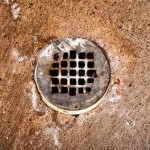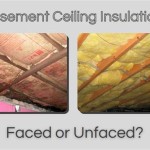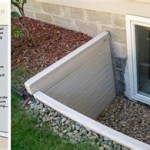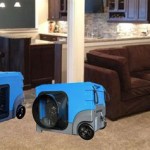Getting Rid of Mold in Basement Walls
Mold growth in basements is a prevalent issue for homeowners, largely due to the inherent dampness and lack of sunlight characteristic of subterranean environments. Mold is a type of fungus that thrives in moist conditions, and basement walls, often constructed of porous materials like concrete, are particularly susceptible. Understanding the causes of mold growth, identifying different types of mold, and implementing effective removal and prevention strategies are crucial for maintaining a healthy and safe living environment.
Mold itself is not always visible to the naked eye. Mold spores, microscopic particles that are carried in the air, are ubiquitous. When these spores land on a surface with sufficient moisture and organic material (such as dust or drywall), they can begin to colonize and grow. Basement walls, especially those that are not properly sealed or insulated, can provide the ideal conditions for mold proliferation. Addressing the underlying causes of moisture is the first and most important step in any mold remediation project.
Identifying the Causes of Mold Growth
Pinpointing the source of moisture is vital for effective mold removal and prevention. Common causes of dampness in basements include:
*Water Leaks:
Cracks in the foundation walls or floor, leaky pipes, and malfunctioning appliances can all contribute to water intrusion. Even seemingly minor leaks, if left unaddressed, can create a persistently damp environment conducive to mold growth. Regularly inspecting plumbing and addressing any signs of water damage promptly is essential. Outside factors such as poor grading around the foundation can direct water towards the walls, requiring solutions such as improved drainage systems. *Condensation:
Condensation occurs when warm, humid air comes into contact with a cold surface. Basement walls, especially during the summer months, can be significantly cooler than the air inside, leading to condensation. This is particularly problematic in basements with poor ventilation. Dehumidifiers can help to reduce humidity levels, while improved insulation can help to keep basement walls warmer. Ensuring adequate airflow through ventilation systems or by opening windows (when weather permits) can also mitigate condensation. *Flooding:
Whether due to heavy rainfall, overflowing gutters, or sewer backups, flooding can introduce significant amounts of water into the basement, saturating walls and creating a breeding ground for mold. After a flood, immediate water extraction and thorough drying are crucial to prevent mold growth. Porous materials, such as carpets and drywall, may need to be removed and discarded if they have been exposed to floodwater. Water-resistant or waterproof materials should be considered for renovation or rebuilding after flood damage. *Poor Ventilation:
Inadequate ventilation traps moisture, creating a humid environment that promotes mold growth. Basements that are not properly ventilated are more likely to experience condensation and moisture buildup. Installing exhaust fans, especially in areas prone to moisture, such as bathrooms or laundry rooms, can improve ventilation. Ensuring that existing ventilation systems are functioning correctly and are not blocked by debris or obstructions is also important.Recognizing Different Types of Mold
While all types of mold require moisture to grow, different species exhibit distinct characteristics and can pose varying health risks. Identifying the type of mold present can help determine the appropriate remediation strategy, though professional testing is often recommended for accurate identification and risk assessment.
*Aspergillus:
This is a common type of mold found both indoors and outdoors. It can appear in a variety of colors, including green, yellow, brown, and black. Some species of Aspergillus can produce mycotoxins, which can cause allergic reactions and respiratory problems. It often grows on fabrics, clothing, and paper products. *Cladosporium:
This mold is often found in damp areas, such as bathrooms and basements. It is usually black or green in color. Cladosporium is generally considered to be less toxic than some other types of mold, but it can still cause allergic reactions and asthma symptoms. It commonly thrives on fabrics and indoor plants. *Penicillium:
This mold is often blue-green in color and is commonly found on food and in water-damaged buildings. Some species of Penicillium are used to produce antibiotics, but others can cause allergic reactions and respiratory problems. It is often found in areas where there is dampness or condensation. *Stachybotrys chartarum (Black Mold):
This is perhaps the most well-known type of mold and is often referred to as "black mold." It is a greenish-black mold that grows on materials high in cellulose, such as drywall, paper, and wood. Black mold is associated with a variety of health problems, including respiratory issues, skin irritation, and neurological symptoms. While any mold growth should be addressed promptly, black mold requires particular attention and professional remediation may be necessary.It is important to note that visual identification of mold can be unreliable. Professional mold testing can accurately identify the type of mold present and determine the extent of the contamination.
Effective Mold Removal and Prevention Strategies
Proper mold removal involves not only eliminating the existing mold but also addressing the underlying moisture problem to prevent recurrence. A multi-faceted approach is often necessary to achieve long-term success.
*Safety Precautions:
Before beginning any mold removal project, it is essential to take appropriate safety precautions. Wear protective gear, including gloves, a respirator mask (N-95 or higher), and eye protection, to avoid inhaling mold spores or coming into direct contact with contaminated materials. Ensure that the work area is well-ventilated. *Cleaning and Disinfection:
For small areas of mold growth (less than 10 square feet), homeowners can often handle the removal themselves. Begin by cleaning the affected area with a mixture of water and a mild detergent. Use a scrub brush to remove the mold from the surface. After cleaning, disinfect the area with a bleach solution (1 part bleach to 10 parts water) or a commercial mold killer. Allow the disinfectant to sit on the surface for the recommended time before rinsing. Never mix bleach with ammonia, as this can create toxic fumes. *Removal of Heavily Contaminated Materials:
Materials that are heavily contaminated with mold, such as drywall, carpet, and insulation, may need to be removed and discarded. These materials are often porous and can be difficult to clean effectively. When removing contaminated materials, seal them in plastic bags to prevent the spread of mold spores. Dispose of the bags properly according to local regulations. *Addressing the Moisture Source:
Mold removal is only a temporary solution if the underlying moisture problem is not addressed. Repair any leaks, improve ventilation, and dehumidify the basement to create an environment that is less conducive to mold growth. Consider sealing basement walls with a waterproof sealant to prevent moisture from penetrating the concrete. Install or repair gutters and downspouts to direct water away from the foundation. *Professional Mold Remediation:
For large areas of mold growth (over 10 square feet) or if you suspect that the mold is toxic, it is recommended to hire a professional mold remediation company. These companies have the expertise, equipment, and training to safely and effectively remove mold and address the underlying moisture problem. They can also conduct mold testing to identify the type of mold present and assess the extent of the contamination. Professional remediation typically involves containment of the affected area, removal of contaminated materials, cleaning and disinfection of surfaces, and air filtration to remove mold spores. *Preventative Measures:
Once the mold has been removed and the moisture problem has been addressed, it is important to take preventative measures to prevent future mold growth. These measures include: * Maintaining good ventilation in the basement. * Using a dehumidifier to keep humidity levels below 50%. * Sealing cracks in the foundation walls and floor. * Insulating basement walls to prevent condensation. * Regularly inspecting the basement for signs of water damage or mold growth. * Cleaning up any spills or water leaks immediately.By understanding the causes of mold growth, implementing effective removal strategies, and taking preventative measures, homeowners can maintain a healthy and safe basement environment.

6 Steps To Getting Rid Of Mold On Basement Walls Avoiding

How To Remove Mold From Basement Walls Get Rid Of Molds Concrete Air Quality Express

How To Remove Get Rid Of Black Mold In Basement Sani Tred

Learn How To Remove Mold From Basement Walls

Remove Basement Mold Expert Tips Solutions For 2024

How To Get Rid Of Mold In Your Basement 5 Steps Remove Black Woodard

How To Get Rid Of Black Mold In Your Basement

How To Clean Mold On Basement Walls And Prevent Reoccurrence

How To Kill Mold In Your Basement With Borax And Warm Water

What You Need To Know About Mold From Basement Flooding
Related Posts







